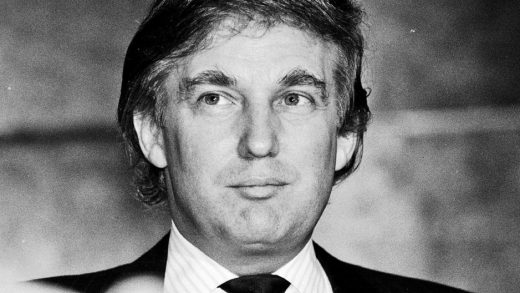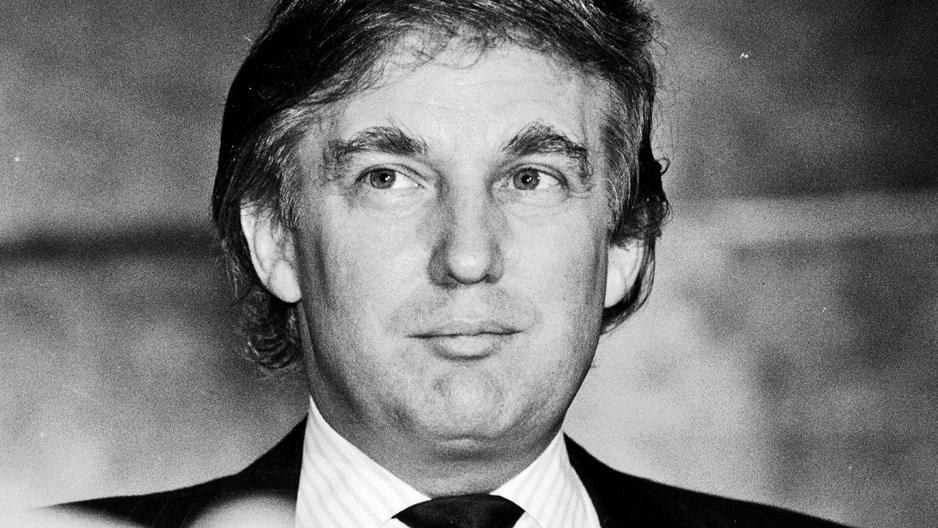Every Brand Has A Cherished Storyline, And Trump Is No Different
Read Trump’s executive orders, tweets, and speeches, and you get to wondering: Is he crazy like a fox, or crazy like he belongs on a locked ward at Happy Farms? Is he Machiavellian—or profoundly unwell? The fate of the Republic seems to depend on the answer—and yet we may never get a definitive one.
But while we can’t yet diagnose Trump the man, we can talk about his style of storytelling. We’ve been subjected to yottabytes of that storytelling, after all. Foremost, Trump’s utterances are chaotic: They’re semantically tangled, they show contempt for reality, and they meander into non sequitur and perseveration. As the Flesch-Kincaid grade-level test reveals, Trump speaks like a 9-year-old. And when he believes his vanity is under assault, he does something far weirder than just resort to childish speech, lying, and hedging. He erects a haphazard wall of words meant to serve not as a statement, but as a flailing parry.
At 5 p.m. on Saturday—the day of Trump’s executive order banning people from seven Muslim-majority countries—the president was asked about the ban. Protests were snowballing at American airports, and the ACLU had already filed a suit in court that within a few hours would allow detainees to stay in the U.S. Trump’s reply? “It’s working out very nicely. You see it at the airports. You see it all over.” (Trump’s silliest exaggerations—”all over”—are his plainest tell). Fact-checking and reason will never work against words that are more sound and fury than sense.
But Trump’s speech wasn’t always so irrational. There was a time when his personal brand added up, and was his great pride. To revisit this moment is to see the narrative high he’s always chasing, the one he chased most frantically in his inaugural address, the story of a nation laid to waste by bureaucrats and street crime and in need of redemption by Trump’s riches, bluster, and vanity. It’s a tale that so enchants Trump that he can’t stop telling it, ruminating on it, and trying to force it to be true again—facts of the world be damned. And unlike the various diagnoses he’s been subject to—he’s a narcissist! A king! A baby!—this tale, and Trump’s commitment to rehashing it, does have predictive power, and might help us know what he’ll do next.
Gather round, millennials, and let me bore you: It’s Gotham. 1976. Trump is the blessed age of 30. He’s rich, unmarried, and certifiably handsome. No less than the New York Times takes fawning note: “He is tall, lean, and blond, with dazzling white teeth, and he looks ever so much like Robert Redford.”
Trump’s Ford-era hair is unfaded, full, and feathered—the same coif he takes pains to simulate now, a male Miss Havisham in his last costume of glory. He had, as he liked to say in those days, “flair.”
Who doesn’t cherish the memory of being at the height of her powers—sexual, financial, and everything in between? But in the ’70s, Trump’s flair even had moral value, especially in New York City, because the despoiled and feckless city was perceived as sorely lacking in it. According to the somewhat creaky fable, ’70s trains were streaked with graffiti. The parks bristled with dirty needles. In Times Square were sordid peepshows. Everywhere were wolf packs of wilding thugs. Welfare moms, aided by pompous bureaucrats, blew their handouts on dope. The city was “ungovernable”—at least by the mayor, a meager and corrupt public servant.
Remember that this is a fairy tale. So what’s needed is a hero—in this case, one from the private sector with short hair and clean teeth, deep pockets, and a sweeping disgust for humanity. Abstemious health habits also a plus. A kind of Travis Bickle with money. In the same dazzling-white-teeth article, the Times credulously noted that one of Trump’s developments was “philanthropic” and that his midtown developments would, as Trump put it, “get rid of all that pornographic garbage in Times Square.” (Trump pointedly didn’t intend to extend his largess to black and brown neighborhoods: “New York is either going to get much better or much worse,” he said. “And I think it will get much better. I’m not talking about the South Bronx. I don’t know anything about the South Bronx.”)
In 1976, this didn’t play like the Joker’s creepy this-town-needs-an-enema rhetoric from the 1989 Batman film. Trump’s disgust was heroic in the ’70s. The Times approved of it, as did many others. Trump in the ’70s and into the ’80s was respected, revered, and damn popular. When he said there was a crowd somewhere for him, there was a legit crowd.
At his back was even some highbrow stuff: Ayn Rand, Adam Smith, and various conservative academic economists who increasingly saw the rich as antidotes to the nation’s growing malaise, its miserable stagflation. As the decade wore on and turned to the money-besotted ’80s, pop culture made the fantasy cartoonish. On MTV and elsewhere, men in suits with fat money clips trickled gold over to the poor, or at least aimed to use their flair to both inspire and shame the homeless and jobless into ambition and self-respect.
For that shining moment, Trump genuinely was on the right side of history.
And he’s been angling to get back there ever since. Today, when he’s confronted with any evidence that he’s not young, Redfordesque, wildly popular, and here to bring flair to the unruly streets, he balks like a man clinging to a hallucination. Tell him it’s 2017—violent crime is down, “welfare queens” don’t exist, the crowds at his Inauguration were limited, he has millions of detractors, his hair is white and missing in patches—and he can’t stand it. By contrast, he’s eerily serene in the face of attacks that should be much more painful—when his son Barron is criticized, or he’s faulted for autocratic behavior or not paying taxes—because those attacks don’t confound his decades-old narrative of himself.
Of course, it’s not uncommon for politicians to invoke lessons and fables from past experiences. John McCain’s POW heroism, Joe Biden’s personal losses, Bill Clinton’s “Man from Hope” saga. But Trump’s rhetorical eccentricity is that he doesn’t describe this time as like that time in specific ways, or suggest it is informed by it; he tightens the connection absolutely, and speaks as if 2017 is just like 1976. And he attacks like a man fighting for his life if anyone suggests that 41 years have passed, and the world is different now.
Watch how he responds to people of color in 2017: He tries to make them illegitimate in his story (as with the birther campaign) or inadmissible (as with the Muslim ban and the border wall). White America is his Times Square, threatened by heathens who simply need to be removed. There is no South Bronx in Trump’s cherished narrative; he must shut it out. There is nothing but his own flair. It’s 1976. He’s Robert Redford. As long as he tells himself that, he will keep behaving brutally and enacting brutal policies designed to keep the truth at bay. And that’s crazy by any definition.
This story reflects the views of this author, but not necessarily the editorial position of Fast Company.
Fast Company , Read Full Story
(57)



